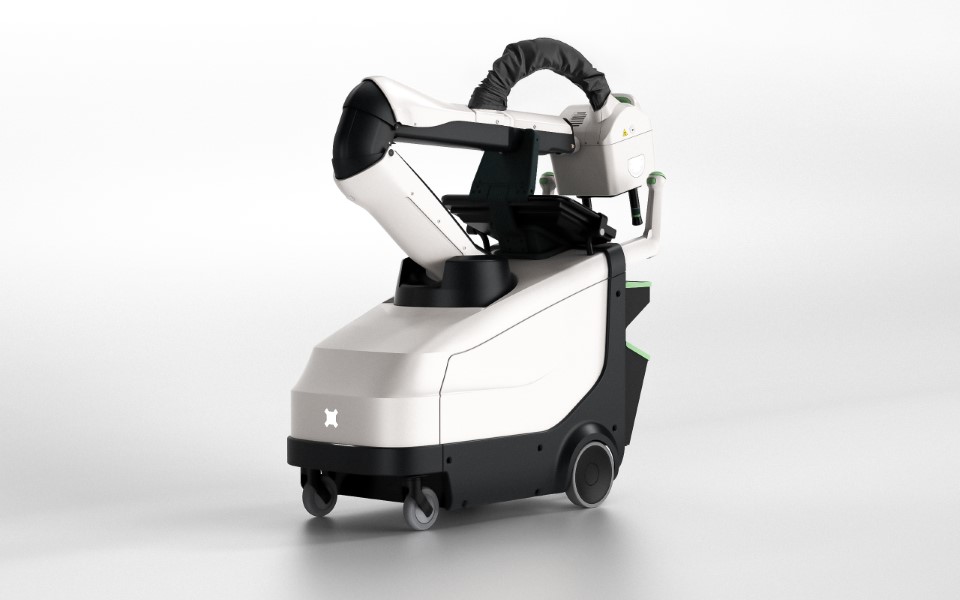

Two years ago I was asked to have a look at how we could use potting to insulate a new, in-house designed high voltage generator.
I knew what potting was, or so I thought, and so began a fascinating and challenging journey of discovery, invention, mad creativity, and development.
Micro-X use a bespoke, two-part epoxy resin to provide solid state high voltage encapsulation of its high voltage electrical generators. Currently, we manufacture two of these generators. One which generates 120,000 Volts DC, this is about the size of a washing machine drum, and a much smaller unit which generates 160,000 volts DC which is about the same size as a Nutribullet processor.
We also use the potting resin to insulate other devices which are necessary to allow test and development of the generators as well as other systems we are working on.
The reason we opted to use a resin to deliver the insulation we required, over the more traditional oil filled vessel for insulation is, in essence, quite simple. It is to allow us to make much, much smaller devices than we ever could if we used oil as the insulator. That is partially where the challenge began, because pretty much every manufacturer of HV generators around the world use oil as the insulating medium, because it works. It works because to achieve what is necessary the easiest option is simply to make the vessel larger, more space between the internal components submerged in oil will provide sufficient insulation and prevent you from making lightning in the vessel from an electrical arc breakdown. Whilst these breakdowns are very exciting to see, they are usually terminal for the electrical and electronic components within, so it’s best to avoid that if you can!

Six months of investigation and testing more than 60 different epoxy resins from around the globe taught us a huge amount about what we needed, and just as importantly, what we didn’t. However, we couldn’t find an epoxy material which delivered just what we needed, some came close, most failed.
Our research led us to an Australian company that turned out to have not quite what we needed off the shelf, but they developed a unique formulation of resin which delivers beyond what we initially required in terms of Dielectric strength; this is a critical feature which ensures the generators will operate for years to come.
Development progressed well and during this time we developed a unique method of processing the resins under vacuum for almost the entire process from start to finish. This was necessary to ensure there is no air within the resin when it encapsulates the electrical and electronic trickery within the devices. Air in the resin will result in lightning inside the vessel, which we know is very bad!
So, we began with a very manual process which allowed us to make one generator anode per day, just. Scroll forward to today and we now have a fully automated vacuum injection system which allows us to make 10 units per day, with exceptional reliability and efficiency.
The next challenge is now well underway, to produce even smaller high voltage parts for the next generation of Micro-X devices.


In the final newsletter for 2025, we reflect on some of the achievements of the year, while looking towards what is to come in 2026.


The newly updated Rover Mobile DR X-ray system will be launched at the Radiological Society of North America (RSNA) Annual Meeting in Chicago this November, building on Rover's proven strengths in lightweight, motor-free mobile imaging.


Ahead of World Stroke Day on October 29, Stockhead’s host Fraser Palamara spoke with Australian Stroke Alliance co-chair Professor Stephen Davis about the massive global impact of stroke and the technology reshaping how it’s treated.

Micro-X creates revolutionary X-ray technology to better lives.
Our Purpose
Find out how Micro-X is creating new opportunities for industries across the world.
Find out more
They’re the visionaries and innovators behind our X-ray technology, products, culture and ethos.
Meet the team